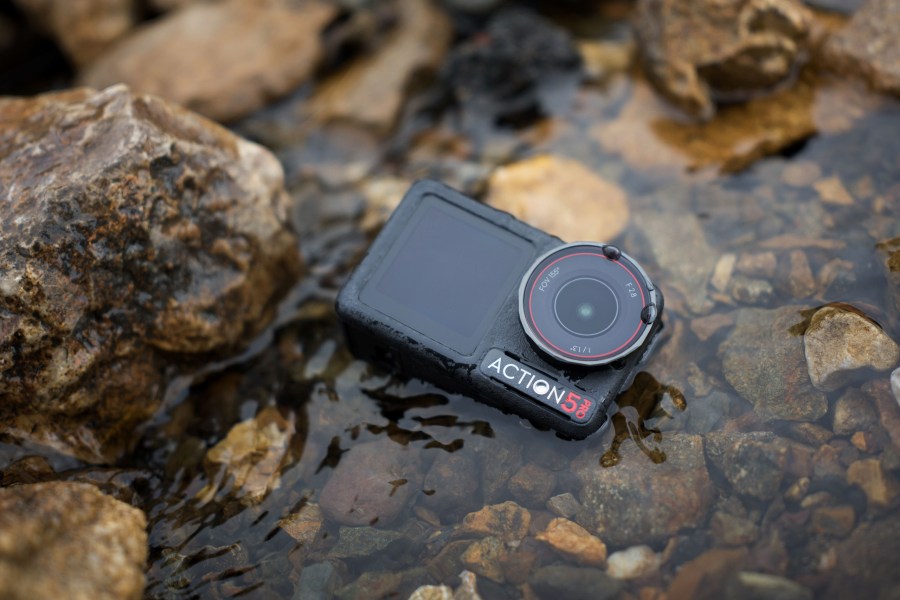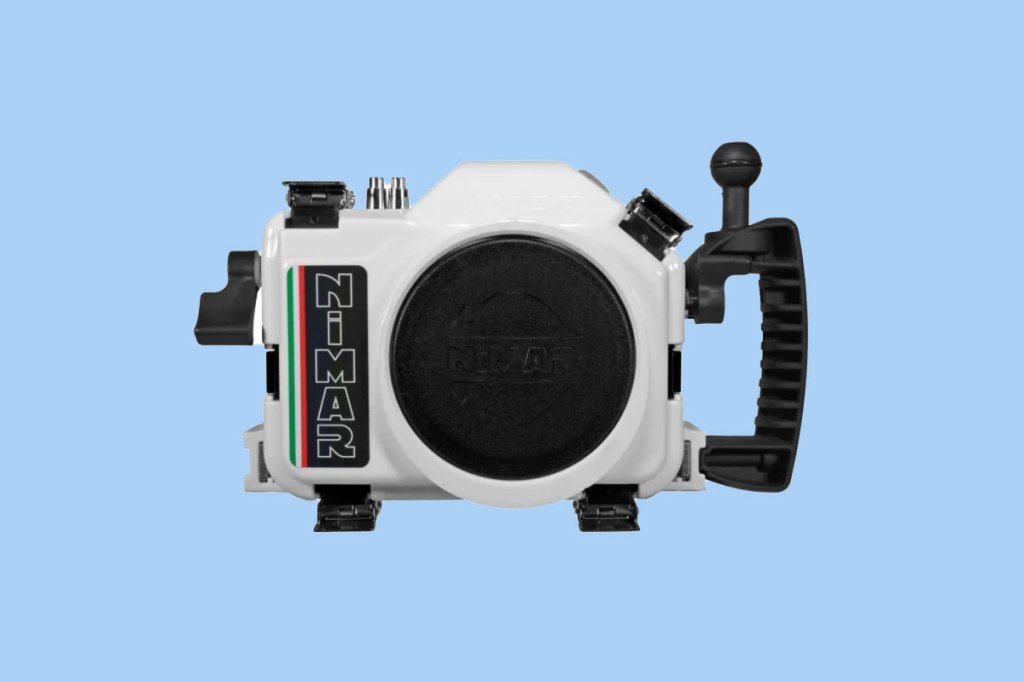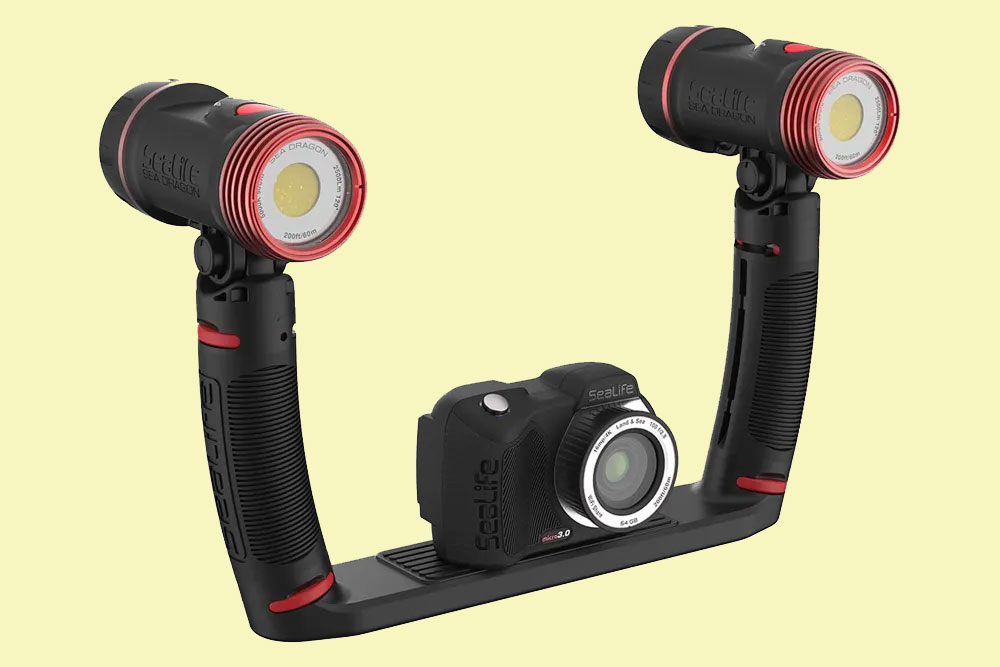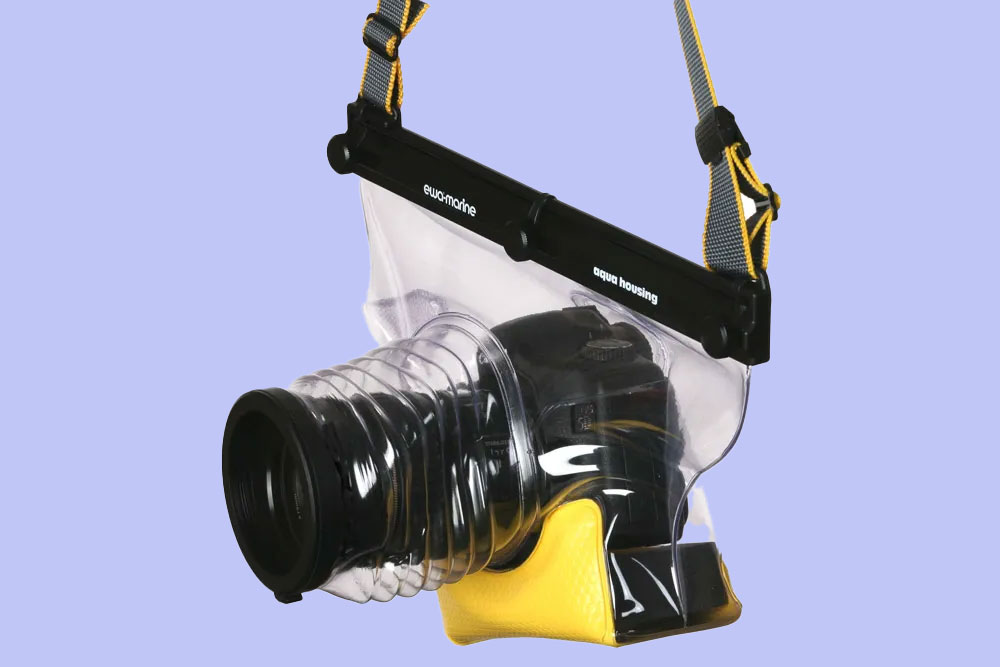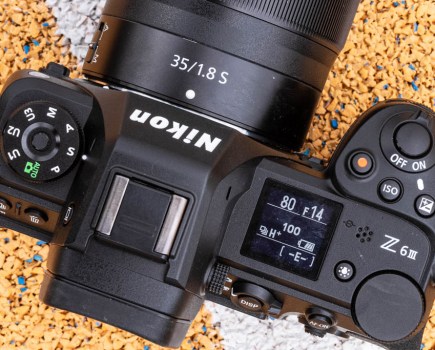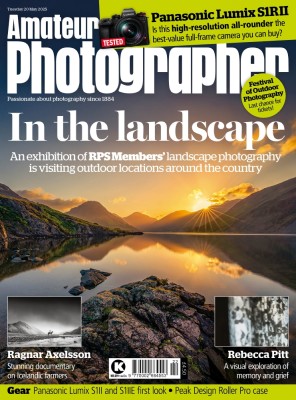In this guide to the best waterproof cameras and housings, we help you to craft an optimal setup for underwater shooting. We’ve included action cameras that are great for watersports, high-end housings that’ll allow you to take your main camera safely underwater, and hardy tough compact cameras that are ideal for beach holidays and snorkelling. Whatever you have in mind, and whatever your budget, there will be a waterproof photography and videography solution here for you.
Waterproof cameras and housings are different things: waterproof cameras are self-contained shooters in their own right, while waterproof housings are protective cases that you put a regular camera inside. A waterproof camera tends to be an inexpensive option, while housings are designed generally for professionals, and can frequently command four-figure price tags (though not always, as we’ll see). We’ve tested plenty of examples of both, and the entries on this list are the ones we believe offer the best value for money. We haven’t simply stuck in all the latest models – if we feel an older camera offers better value than a newer one, it stays on the list.
The upshot is that underwater photography is possible to pursue on any budget – you just need to do some research and find the right kit. So let’s get into it!
The best waterproof cameras: our quick list
Hunting for the best deals on waterproof cameras and housings? See our quick list below, where we’ve not only listed the best waterproof cameras and housings you can buy now, but have also set up links to the best prices for each one. Simply click the ‘buy now’ button to be taken to one of our trusted retailers, where you’ll. findunbeatable offers on all the cameras and houses we’ve reviewed for this guide.
Best waterproof cameras:
- Best for snorkelling: OM System Tough TG-7 – buy now
- Best for divers and water sports enthusiasts: DJI Osmo Action 5 Pro – buy now
- Best for holiday snaps: Ricoh WG-6 – buy now
- Best for adrenaline action water sports: GoPro HERO12 Black – buy now
- Best for travel / pro video creators: Sony RX0 II – buy now
Best waterproof housings:
- Best for serious divers and underwater photographers: Nauticam NA-A1 for Sony A1 – buy now
- Best for divers and snorkelers shooting stills: Sealife Micro 3.0 Pro Duo 5000 – buy now
- Best for DSLR users: Ewa-marine U-BZ100 – buy now
Why you can trust Amateur Photographer
We spend many hours testing every product we recommend, in detail, in a variety of situations and shooting scenarios, and only use experts for our reviews, so you can be sure that you’re getting the best products. Find out more about our expert writers.
The best waterproof and underwater cameras
First up, we’re running through our picks of tough compacts and action cameras designed to capture fantastic images and videos underwater. With great options from the likes of GoPro, DJI, Olympus, Fujifilm and more, there’s plenty here for watersports vloggers, avid snorkellers and casual beachgoers alike.
Best overall
Best for snorkelling: OM System Tough TG-7

Amateur Photographer verdict
Easy to use and boasting a high-quality optical zoom lens with a generous aperture, the Tough TG-7 is an ideal snorkelling companion.- Raw shooting available
- Compact, tough, waterproof
- Impressive macro performance
- GPS, Wi-Fi, Bluetooth built-in
- F2.0 4x optical zoom lens
- Quality drops on zooming in
- Expensive for a compact
- Raw needed for best results
At a glance:
- 12MP 1/2.33inch BSI CMOS Sensor
- 4x optical zoom lens, f/2.0-4.9, 24-100mm equivalent
- In-body image stabilisation (CMOS shift, up to 2.5stops)
- 3inch screen, 1040K
- 15m waterproof
- Drop/Shock/Dust/Freezeproof
- Wi-Fi, Bluetooth
- GPS, Elevation, Temperature
- ISO100 – ISO12800
- 4K 30/25fps video recording
- 113.9mm (W) x 65.8mm (H) x 32.7mm (D)
- 249g
- Price: $500 / £499
The Olympus TG-7 is a tough little camera that is lightweight, agile and great for those adventurous types who want to explore the surface of the water. It is OM’s tough, compact, waterproof camera. It’s waterproof down to 15 meters, drop-proof, crushproof, dustproof and freezeproof. It may look very similar to previous versions, but this camera has advantages in the range of accessories available that work interchangeably between the models.
The lens on the OM System TG-7 is a 4x optical zoom, starting at the wide-angle equivalent of 25mm, zooming to 100mm (equivalent). It also starts with an F2.0 aperture, which is quite bright, although this does stop down when using the zoom, stopping down to F4.9 at the telephoto end.
There’s a 12MP BSI CMOS sensor, which is a 1/1.7inch-type sensor, meaning it’s smaller than most other compact cameras, and it’s even smaller than many flagship smartphones. Continuous shooting is available at 5fps with the mechanical shutter, or 20fps when using the electronic shutter, both with fixed focus.
Read our Olympus Tough TG-7 review
Best for divers and water sports enthusiasts: DJI Osmo Action 5 Pro
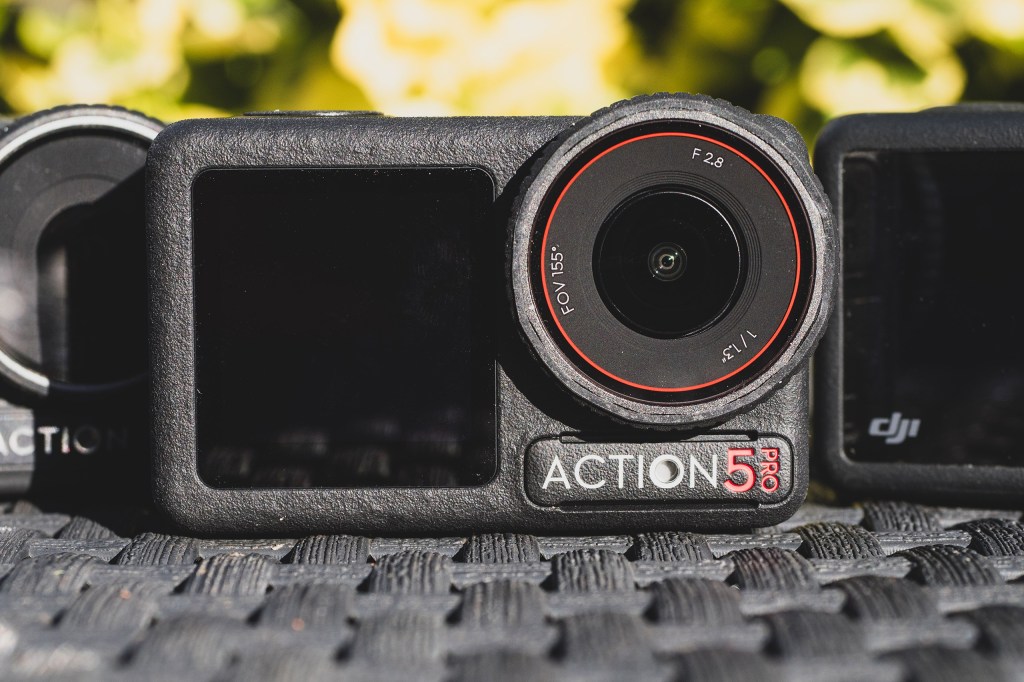
Amateur Photographer verdict
With beefed up video capabilities and best-in-class waterproofing, the DJI Osmo Action 5 Pro is a deep-diving winner.- Deep native diving capability
- 47GB internal storage
- Imnproved video and stills resolution
- No 5.3K
- No modular lens options
At a glance:
- 40MP 1/1.3-inch CMOS sensor
- Waterproof down to 20m
- Dual OLED High-Brightness touchscreens
- 4K video up to 120fps
- Price: $349 / £409 Standard combo, $449 / £409 Adventure combo
DJI has been nibbling at GoPro’s market dominance with its Osmo Action series for a few years now. With the Osmo Action 5 Pro, it has a credible case for having made the best waterproof action camera currently on the market. Something that impresses about the Osmo Action 5 Pro right off the bat is its 20m native waterproofing – native here meaning without any case or extra housing. This is best-in-class for action cameras currently, with the rival GoPro Hero 13 Black natively waterproofing to only half the depth.
Of course, that wouldn’t matter if the Osmo Action 5 Pro couldn’t produce decent images, but its larger sensor delivers exemplary dyamic range and detail even when the light gets low. Having 40MP on a camera of this type is truly impressive Videographers might be disappointed that movie resolution tops out at 4K rather than 5.3K – though it is at leats excellent-looking 4K, with the option to capture at 120fps.
In our review, action camera fanatic Matty Graham was full of praise for the DJI Osmo Action 5 Pro, and concluded that it is more or less the best option for videographers looking for a waterproof camera right now. While GoPro offers a certain edge with its new range of modular lens accessories, DJI’s Osmo Action 5 Pro is a solid workhorse that absolutely nails the fundamentals.
Read our full DJI Osmo Action 5 Pro review.
Best for holiday snaps: Ricoh WG-6
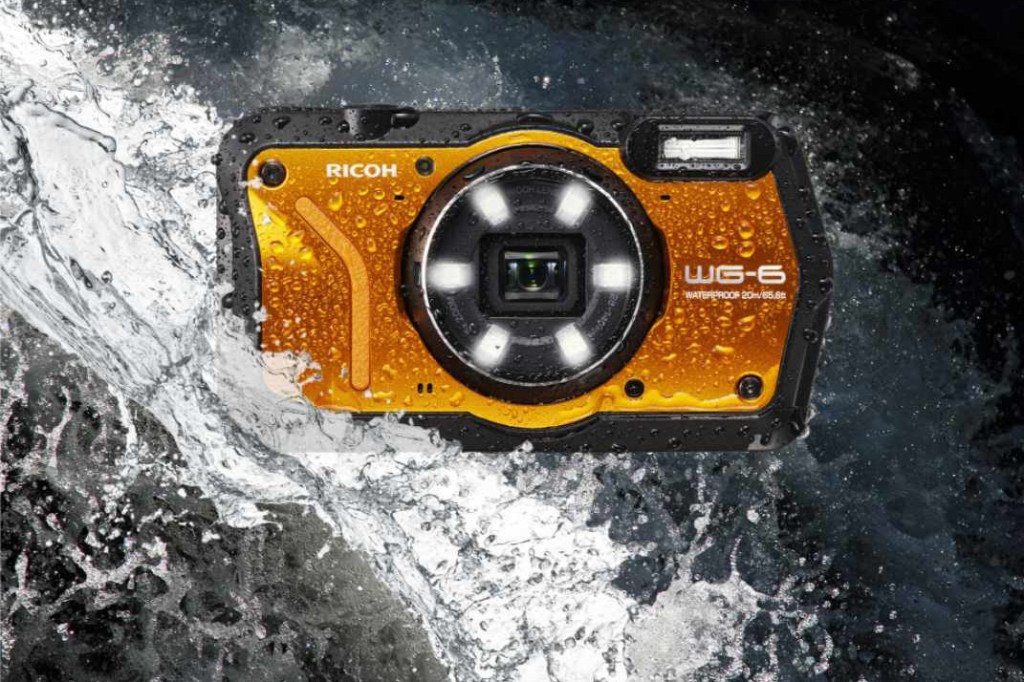
Amateur Photographer verdict
While it’s a fairly simple compact camera, that is going to appeal to some users, and if you’re just looking to capture beach holiday snaps the WG-6 is a good choice.- Dedicated underwater modes
- Built-in LED lights
- Easy to use
- Struggles in low light
- Limited manual control
At a glance:
- 20MP CMOS image sensor
- Waterproof down to 20m (for 2 hours)
- 6 x LED ring light around lens
- 4K video
- Price: $300 / £230 (used)
The Ricoh WG-6 comes with a host of features and has been designed to be put through its paces thanks to its waterproof and shockproof features. It has a workable operating temperature from -10°C to 40°C making it compatible with many different environments.
The tough outer body comes in a bright orange or a more understated black design, and the addition of the 6 LED lights surrounding the lens, which can be adjusted to use all or some, will help greatly in lowlight situations. Finally the Ricoh WG-6 also comes with an Underwater and Underwater Movie mode that fixes the white balance setting, making the blue sea pop!
Best for adrenaline action water sports: GoPro HERO12 Black
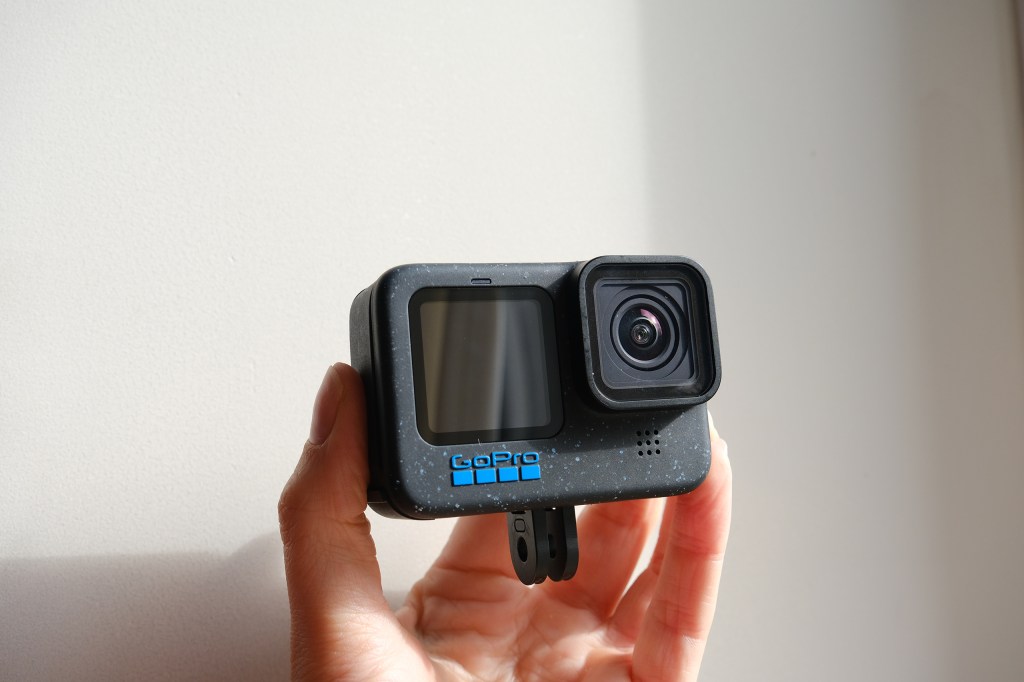
Amateur Photographer verdict
With a generous 8:7 sensor, this offers much of the same functionality as the newer HERO13 Black, for less money.- Supports multiple aspect ratios
- Price has come down
- Lots of shooting modes
- Large accessory ecosystem
- Can overheat with heavy use
- Not the best in low light
At a glance:
- 1/1.7-inch 27MP 8:7 sensor
- 5.3k video at 60p
- Waterproof down to 10m
- GP-Log and LUT support
- Price: $299 / £349
This isn’t the newest GoPro camera in the series, with the HERO13 Black having made its debut in September 2024. However, the differences between the two are fairly minimal, so we’re sticking with the HERO12 Black as our recommendation – largely because you can save £100/$100 by opting for the slightly older model. What do you lose by doing so? A few features like built-in GPS (which admittedly is nice) and compatibility with GoPro’s newer range of HB-Series Lenses, which could also be described as another way to give GoPro more money.
And the HERO12 Black produces sublime images and videos. Its larger-format 8:7 sensor, introduced on the HERO11 generation, makes it easier to output video in multiple aspect ratios, from standard widescreen to mobile-friendly vertical. Seasoned video pros will also appreciate the addition of the G-Log colour profile and LUT support.
Underwater-wise, the HERO12 Black can natively descend to depths of 33ft or 10m, which is standard for GoPro cameras. This can be extended down to 60m with separately purchased housing, making the GoPro a solid choice for scuba-diving as well as snorkelling and water sports. Various mounts also allow you to attach it to your head, chest, helmet or wrist, freeing up your hands for swimming.
Best for travel / pro video creators: Sony RX0 II
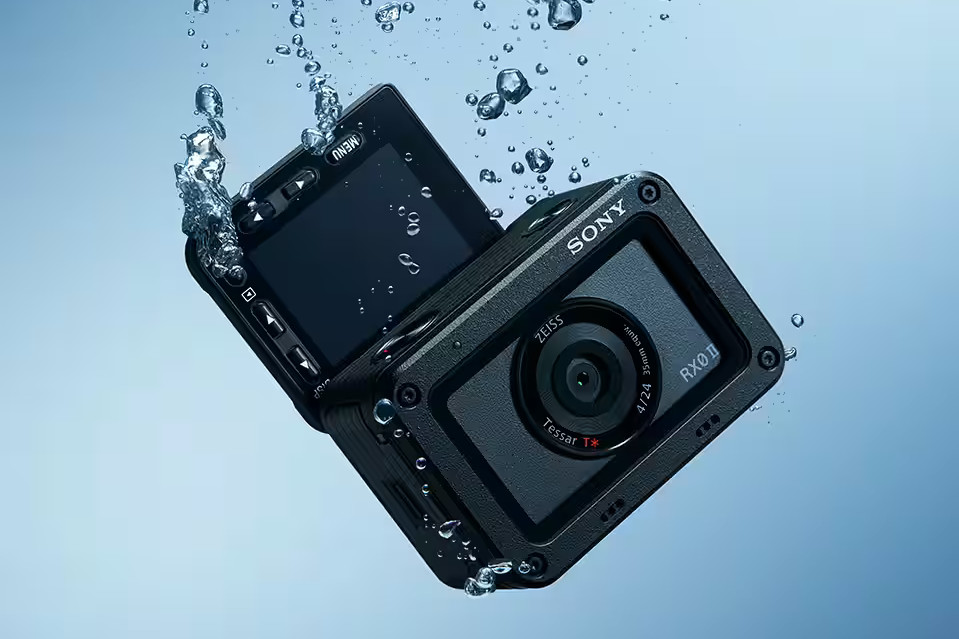
Amateur Photographer verdict
The price is aggressive for a camera of this type, but you can’t fault the Sony RX0 II for toughness and quality. A useful tiltable monitor aids self-shooting, and the Zeiss lens is ultra-sharp.- Superb video quality
- Sharp, Zeiss-made lens
- Effective stabilisation
- Even pricier than GoPro
- 4K maxes out at 30p
At a glance:
- 15.3MP 1inch image sensor
- Waterproof down to 10m
- Shockproof up to 2m, crushproof up to 200kg
- 4K video
- Price: $698 / £730
The small and tough Sony RX0 II is perfect for those adventurous types who are on the go or for vloggers who want to create high quality 4K videos with image stabilisation. Despite being small the camera comes with a 180° tiltable monitor that enables you to frame up selfies or shoot video of yourself.
The camera comes with a host of features including interval shooting (between 1 and 60 seconds) which can then be edited into a timelapse movie on a computer at a later time. It is also waterproof up to 10m, shockproof and crushproof so you can really put it through its paces. On dry land we recommend you get the additional VCT-SGR1 Shooting Grip to help you create more stable results.
Best underwater housings
If you want to get the utmost in image quality underwater, then your best bet is to take your regular camera down with you. An underwater housing is just the thing, allowing you to shoot with a standard mirrorless or DSLR camera and capture all the wonders of the sub-aquatic world. Be aware that housings are quite costly and many are only compatible with one or a few specific models or camera. To help get you started, we’ve picked out some suggestions of the best underwater housings for this section.
Nauticam NA-A1 for Sony A1

Amateur Photographer verdict
A premium set of housings for pro cameras, one of these will keep your camera safe to deep depths – as long as you can afford it.- Sealed to depths of 100m
- Premium construction
- Range of camera compatibilities
- Very costly
At a glance:
- Compatible with Sony A1 (options available for A7S III, A7C, A9 II, A7R V / IV / III, A6600, A7 IV)
- Depth rating 100m
- Patented port locking system
- Ergonomic rubberized grips
- Weight in air 2.7kg
- Measures 340mm x 169mm x 125mm
- Price: $4,657 / £3,830
If you’re going to plunge your very expensive camera into water you need to be sure that the case you are putting it into is waterproof! Nauticam camera cases are the best around and although they don’t come cheap you can be assured your equipment will stay safe up to 100m in depth.
Nauticam produces an extensive range of housings for Sony mirrorless cameras. The one we’ve highlighted here is compatible with the full-frame flagship Sony A1, but there are options for recent cameras like the A7R V, the A7 IV, the A7S III and more. For producing underwater images and videos at top-notch professional quality, these housings are the choice for Sony users.
Best for: Serious divers and underwater photographers
NiMar underwater housing for Canon EOS R6 Mark II
Amateur Photographer verdict
With broad availability for recent cameras, Nimar’s housings are a good underwater option – as long as you can get your hands on one.- Tough build
- Full rear-screen visibility
- Broad camera availability
- May need to be imported
- Not as deep-rated as Nauticam
At a glance:
- Depth rating 60m
- Compatible with Canon EOS R6 Mark II (options available for other EOS R and EOS cameras)
- Body made of high impact resistant technopolymer
- Mechanical command switches
- Overall dimensions without side handle 220mm x 170mm x 130mm
- Weight with side handle 1.70kg
- Price: €1,145
If you want underwater housing for heading down to some serious depth but you’re on more of a budget look at the NiMar range. Made in Italy, these waterproof housings have been designed to go to 60m in depth. The outer housing has been made from a high impact resistant technopolymer and the back cover is fully transparent giving you a full view of the camera and so you can be assured that the seals are working.
We’ve picked out a sturdy housing here for one of Canon’s most recent cameras, the EOS R6 Mark II. However, there are plenty more available for a range of EOS R mirrorless and EOS DSLR cameras over at Nimar, all constructed from the same hard-wearing technopolymer materials.
Best for: Underwater photographers on a budget
Sealife Micro 3.0 Pro Duo 5000
Amateur Photographer verdict
An interesting self-contained underwater shooting system with powerful built-in lights. It’s more cop for stills than video, however.- Complete setup
- Internal 64GB memory
- Bright built-in lgihts
- Limtied video use
At a glance:
- 16MP 1/2.3” CMOS sensor
- Waterproof down to 60m
- 4K videos
- Built in 64GB memory
- Raw shooting
- Permanently sealed micro camera
- Price: $1,399 / £1,640
This is something of a hybrid between a housing and an underwater camera – effectively, it’s a housing with the camera already built in. The SeaLife Micro 3.0 Pro Duo 5000 set comes with a camera body, two Sea Dragon 2500F lights and an ergonomically balanced Flex-Connect dual tray. This makes the camera easy to hold underwater and get into position. The Sea Dragon 2500F lights create a total of 5000 lumens combined which is a decent amount of additional light when you’re down deep.
The camera is permanently sealed meaning you can’t change the memory card or swap over the battery. The 3 hour battery life and inbuilt 64GB is plenty for those wanting to focus predominantly on underwater images; however, for video we would recommend you looking elsewhere – although it does have a 4K video feature for those wanting to shoot short video sequences.
Best for: Divers and snorkelers shooting stills
Ewa-marine U-BZ100
Amateur Photographer verdict
While it’s not for deep, deep diving, this housing has impressive flexibility and can be used with. a variety of cameras.- Cheaper than alternatives
- Lots of compatibility options
- Can be used with tele lenses
- May need to be imported
At a glance:
- Waterproof to 20m in depth
- Compatible for lenses with a filter thread of 77mm and 82mm
- Lenses with a smaller filter diameter can be used with a step-up ring
- Compatible with range of large DSLRs
- Price: $399
Ewa-Marine have a range of underwater housing that vary in size and price. Their more flexible waterproof bags mean they can be used with many cameras. The U-BZ100 is compatible with larger DSLRs on the market such as the EOS 5D and EOS 1DX ranges, and similar cameras. It should also be noted that the U-BZ 100 can be used with a lens up to 300m, which makes it a strong contender for canoeists and other outdoor photographers that want to take pictures of birds and wildlife while in or on the water.
Again like any underwater housing product check it before use to ensure the seals are waterproof to avoid any expensive accidents and read the instructions well to ensure you have set it up correctly. If you are going to take this underwater to its maximum depth we recommend buying the additional BF1 lead weight that can be inserted into the housing, underneath the camera for an easier descent.
Best for: DSLR users
How to choose the best waterproof cameras and housings
As we’ve touched on already, the first question to answer is this: do you want a new camera to take underwater, or do you want to take your current camera setup into the deep? If it’s the latter, then you’re looking for an underwater housing. These can and do range wildly in price, from simple wraparound bags with two-digit price tags, to sophisticated housing rigs that cost thousands. We’ve recommended a few in the latter half of this guide – just make sure you get one that is compatible with your specific camera model!
If you’d rather keep your main camera out of the water (or you don’t have one), then your choices are going to be between tough compacts and action cameras, both of which we’ve included in the first part of this guide. Tough compacts look more like the camera form factor you’re used to, with a thin body, centrally placed lens and shutter button on top. Action cameras, meanwhile, are smaller and boxier – the GoPro HERO is the most famous, and they all pretty much look like that.
Which should you choose? Tough cameras are probably better for photographers, offering a greater level of manual control over stills, and often being equipped with optical zoom lenses. They tend to be easier to handle generally, with more physical controls, and also will often have a built-in flash, which is hugely useful underwater where the light is poor.
Action cameras, however, are often better for videographers, with higher resolution and frame rates (there’s a reason that GoPro shots have started showing up in Hollywood movies). They’re also much more wearable, with mounts available for chest, head, helmet and more, so they’re especially good for recording watersports and scuba jaunts.
Ready to give it a go? Read our complete guide to underwater photography or have a look at our latest buying guides for more great options.
Don’t miss our guide to the best camera bags for something to carry all your new kit in, and we also have a handy guide to the best camera phones, many of which are increasingly being outfitted with limited waterproofing.

